Building a track bike for racing involves several key steps, from selecting the right motorcycle to ensuring it meets all safety regulations. Usabikers.net provides a complete guide to assist motorcycle enthusiasts and bikers in this thrilling journey. Prioritizing safety and compliance is crucial, and usabikers.net offers resources on safety gear, track regulations, and community connections. Let’s explore the exciting world of building a track bike, including performance upgrades, rider safety, and community engagement, with expert advice from usabikers.net.
1. Selecting the Right Bike for Track Racing
Choosing the right bike is the initial and perhaps most crucial step in building a track bike. What are the key considerations when selecting a motorcycle for racing?
The key considerations include bike type, size, and local racing scene popularity. Ensure the bike is eligible for your local race organization’s classes and has a strong local racing community for competition and parts availability. According to the American Motorcyclist Association (AMA), selecting a bike with readily available parts and technical support can significantly reduce maintenance costs and downtime.
1.1. What Distinguishes a Race Bike from a Street Bike?
Race bikes differ significantly from street bikes due to stringent safety and performance requirements. How do these differences impact your build?
Race bikes have modifications such as specialized tires, upgraded braking systems, enhanced suspension, and race bodywork without lights. Street bikes, according to the Motorcycle Safety Foundation (MSF), are designed for comfort and road legality, whereas race bikes prioritize track performance and safety.
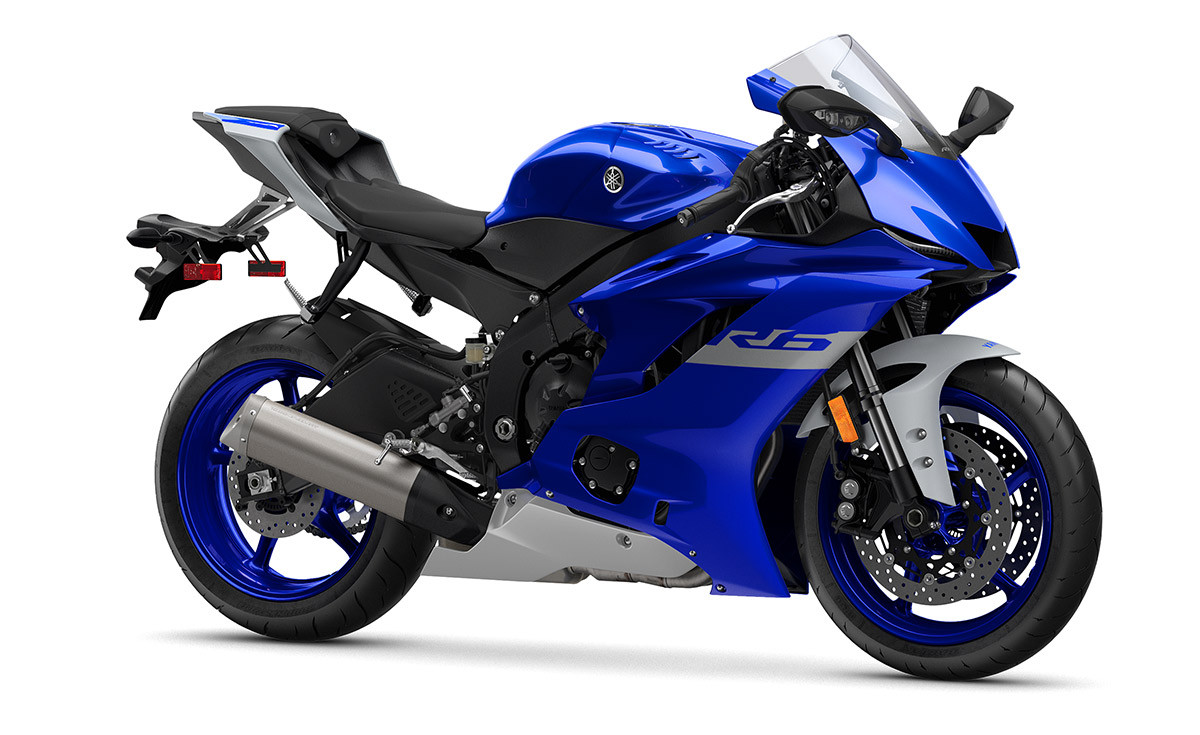 Street Legal 2020 Yamaha R6
Street Legal 2020 Yamaha R6
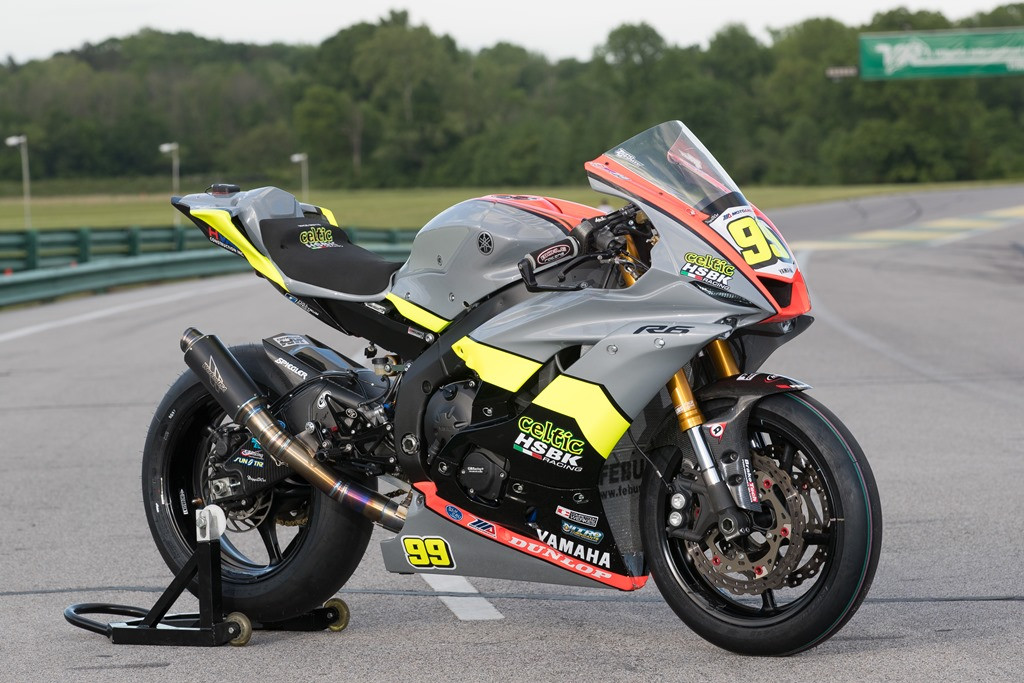 HSBK SuperStock R6
HSBK SuperStock R6
1.2. Why Should a Race Bike Remain a Race Bike?
Converting a race bike back to street use is generally not recommended. What factors make this conversion impractical?
Race bikes often have track-specific modifications, such as aggressive suspension and engine tuning, that make them unsuitable and unsafe for street use. According to experts at usabikers.net, the cost and effort to revert these changes often outweigh the benefits, making it more practical to keep the bike dedicated to the track.
1.3. What Bike Sizes Are Appropriate for Racing?
Choosing the right bike size depends on the racing class and your skill level. What sizes are generally recommended for novice racers?
Generally, 250cc, 300cc/400cc, 600cc, or 1000cc bikes are suitable for novice racers. Smaller bikes like 400cc provide a gentler learning curve, while 600cc bikes balance power and handling. Consultation with your local racing organization is crucial to confirm class eligibility.
1.4. How Does Local Scene Popularity Affect Bike Choice?
The popularity of a particular bike model in your local racing scene can significantly impact your racing experience. Why is this important?
A popular bike model ensures better competition, easier access to spare parts, and more opportunities for learning and improvement. Usabikers.net recommends checking local race results and forums to identify popular models, ensuring you have a competitive and supportive environment.
2. Finding the Right Bike to Purchase
Once you’ve decided on the type and size of bike, the next step is finding one to buy. What are the best approaches for sourcing a race bike?
2.1. What Are the Advantages of Buying a Prepped Race Bike?
Purchasing a race-ready bike can save time and money. What should you consider when going this route?
Prepped race bikes often include necessary modifications and safety features, offering immediate track readiness. Evaluate the bike’s history, maintenance records, and included extras like spare parts and tires. Usabikers.net advises a thorough inspection to ensure the bike meets your standards and racing requirements.
2.2. How Well Maintained Are Race Bikes Typically?
Race bikes are often well-maintained due to the demands of racing. What maintenance aspects should you verify when buying a used race bike?
Race bikes typically receive regular maintenance, including frequent oil changes and inspections of wearable parts. Verify maintenance records, check for signs of neglect or damage, and consider a professional inspection to ensure the bike’s reliability.
2.3. Where Can You Find Good Deals on Race Bikes?
Finding the right marketplace for race bikes is essential. Where are the best places to look for these deals?
Good deals can be found on race forums like 13x.com, Craigslist, and Facebook Marketplace, which offer a wide selection and direct communication with sellers. Facebook groups and organization pages provide added transparency, increasing buyer confidence.
2.4. What Should You Look Out for When Buying a Used Race Bike?
When purchasing a race bike, it’s crucial to be aware of potential issues. What are the critical factors to watch out for?
Avoid bikes with high mileage on the original motor and ensure the VIN is intact to prevent buying a stolen bike. A bill of sale is generally sufficient, but be cautious of bikes without a title. Usabikers.net recommends a VIN check at a dealership to verify the bike’s history.
2.5. Is It Cheaper to Buy a Race Bike or Prep a Street Bike?
Comparing costs is a vital part of the decision-making process. Which approach is generally more economical?
Buying an already prepped race bike is often more economical than converting a street bike. The cost of necessary modifications, such as safety wiring, crash protection, and race bodywork, can quickly exceed the price of a race-ready bike.
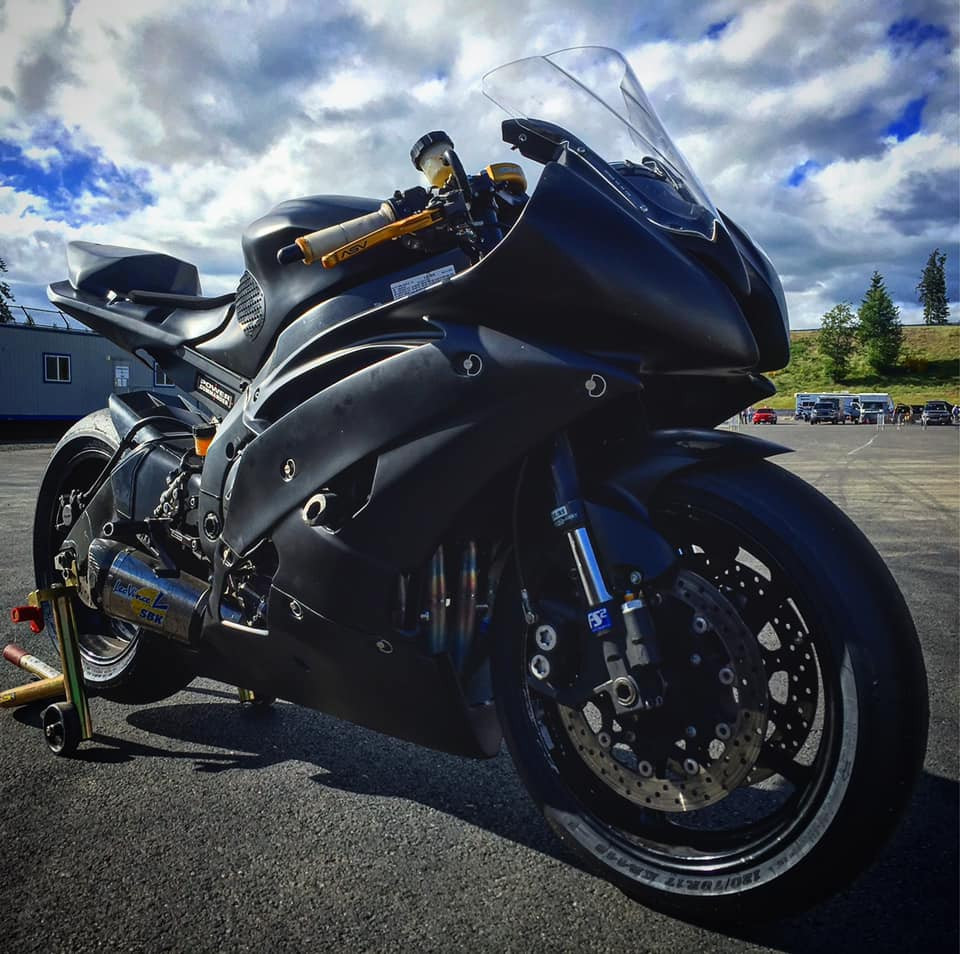 2006 R6 for sale
2006 R6 for sale
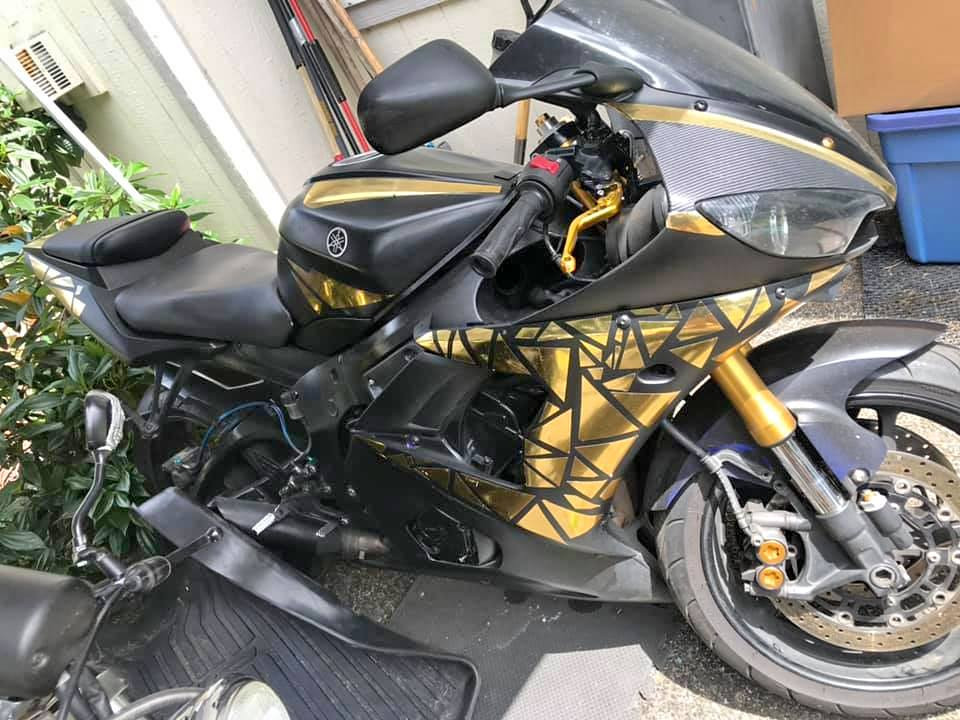 2006 R6 with salvaged title
2006 R6 with salvaged title
2.6. What Are the Benefits of Converting a Street Bike?
Converting a street bike allows for personalized modifications. What advantages does this approach offer?
Converting a street bike lets you customize every aspect of the build, ensuring it meets your specific preferences and performance goals. Building the bike yourself can also provide a deeper understanding of its mechanics, enhancing your confidence on the track.
2.7. Is It Better to Get the Same Bike as Your Street Bike?
Using a familiar model for your race bike can be advantageous. How does this familiarity help in the build process?
Using the same model as your street bike simplifies maintenance and repairs due to your existing knowledge and access to spare parts. Familiarity with the bike’s handling characteristics also provides a head start in track performance.
2.8. How Important Is Bike Age When Choosing a Race Bike?
The age of the bike is a factor to consider, but it may not be the most critical. How much does age matter for race performance?
Bike age is less important than mileage and maintenance history, particularly for novice racers. Models within the last 15 years can be competitive, provided they have been well-maintained. Usabikers.net notes that regular maintenance is more crucial than the bike’s age.
2.9. Should You Buy the Cheapest Bike Possible?
The cost of the bike can influence your riding style. How does a cheaper bike affect your mindset on the track?
A cheaper bike reduces financial pressure, allowing you to focus on improving your skills without worrying excessively about damage. Treating the bike as a write-off can enhance your confidence and aggressiveness on the track.
2.10. What Are Some Final Tips for Buying a Race Bike?
What final pieces of advice should you keep in mind when purchasing a race bike?
Educate yourself on standard checks for used motorcycles and consult reputable resources for guidance. Inspect the bike thoroughly, verify its history, and consider its overall condition before making a purchase.
3. Race Prep: Essential Steps for Track Readiness
Preparing your bike for racing involves several crucial steps to ensure it meets safety and performance standards. What are the key areas to focus on?
3.1. Why Is Maintenance a Priority Before Upgrades?
Performing maintenance before upgrades ensures a solid foundation for performance. Why is this order important?
Maintenance ensures that all systems are functioning correctly, providing a reliable baseline for performance upgrades. Addressing issues early prevents them from affecting your performance and safety on the track.
3.2. What Fluids and Components Should Be Serviced Initially?
Which specific fluids and components should you prioritize during the initial maintenance phase?
Prioritize basic fluids like coolant, brake fluid, and oil, as well as components like spark plugs and air filters. Check the suspension for leaks or signs of wear and replace the fluid and seals if necessary.
3.3. How Can You Save Money on Shop Rates?
Professional shop rates can be costly. How can you reduce these expenses while still ensuring quality work?
Performing maintenance yourself can save money and familiarize you with your bike. For tasks requiring professional expertise, seek recommendations from other racers for reputable shops that offer racer discounts.
3.4. What Are Essential Maintenance-Related Upgrades?
Certain upgrades can enhance both performance and reliability during maintenance. Which upgrades should you consider?
Consider upgrading to a race air filter from brands like K&N or BMC and investing in upgraded brake pads like EBC EPFA/GPFA or Galfer. These upgrades enhance performance and provide added reliability on the track.
3.5. What Are the Main Categories for Making a Bike Race Legal?
Making a bike race legal involves several modifications. What are the primary categories to address?
The main categories are safety wiring, crash protection, and race bodywork. Ensure compliance with your racing organization’s rulebook to pass technical inspections.
3.6. What Is the Purpose of Safety Wire?
Safety wire is a critical safety feature on a race bike. What function does it serve?
Safety wire prevents bolts from loosening due to vibration, acting as a secondary securing mechanism. Practice safety wiring before applying it to your bike to ensure proper technique.
 Safety wire on water pump drain bolt
Safety wire on water pump drain bolt
3.7. What Components Require Safety Wiring?
Which specific components typically require safety wiring to comply with racing regulations?
Radiator caps, drain plugs, and petcocks typically require safety wiring. Consult your local rulebook for a comprehensive list of components that need to be wired.
3.8. How Does Crash Protection Help?
Crash protection components minimize damage during accidents. What are the key items to install?
Install a brake lever guard, frame sliders, and case savers to protect critical components in the event of a crash. Many organizations also require a toe guard or “shark fin” to prevent foot injuries.
3.9. What Are the Options for Race Fairings?
Race fairings offer improved durability and functionality. What brands are available, and what are their characteristics?
Options include HotBodies, Armour Bodies, Flexi-Glass, and SharkSkinz, each offering varying levels of fitment, durability, and price. Consider your budget and performance needs when selecting race fairings.
3.10. What Is the Difference Between Supersport and Superbike Tail?
The tail section of race fairings can vary. What are the differences between Supersport and Superbike tails?
Supersport tails retain the factory seat, while Superbike tails replace it with a fiberglass section and optional foam pad. The choice depends on your comfort preferences and desired seat height.
3.11. What Windscreen Upgrades Are Recommended?
Upgrading the windscreen can improve aerodynamics and visibility. What are the recommended options?
OEM windscreens are adequate, but upgrades like the “double bubble” style from Puig or Zero Gravity can enhance aerodynamics. Avoid colored or tinted windscreens for optimal visibility.
3.12. Is Heat Shielding Necessary?
Heat shielding protects fairings from exhaust heat. Is it a necessary addition for a track bike?
Heat shielding, such as Thermo-Tec, can protect fairings from exhaust heat, although modern systems may not require it. Consider the exhaust system and heat generated when deciding on heat shielding.
3.13. What Fasteners Should You Use?
Using the right fasteners can simplify fairing removal and installation. What types of fasteners are recommended?
Reusable, quick-release fasteners, like DZUS fasteners, simplify fairing removal and installation. Keep zip ties in your track bag for emergency repairs.
3.14. Should You Test Fit Fairings Before Painting?
Test fitting fairings ensures proper fitment before applying paint. Why is this step important?
Test fitting ensures the fairings fit correctly and allows for pre-drilling holes before painting. This prevents fitment issues after the paint job is complete.
3.15. What Paint Options Are Suitable for Race Fairings?
Paint is an aesthetic consideration for race fairings. What options are suitable, and what factors should you consider?
Paint options range from professional jobs to DIY rattle-can applications with 2k clear coat. Durability is key, as the paint will likely get damaged during racing.
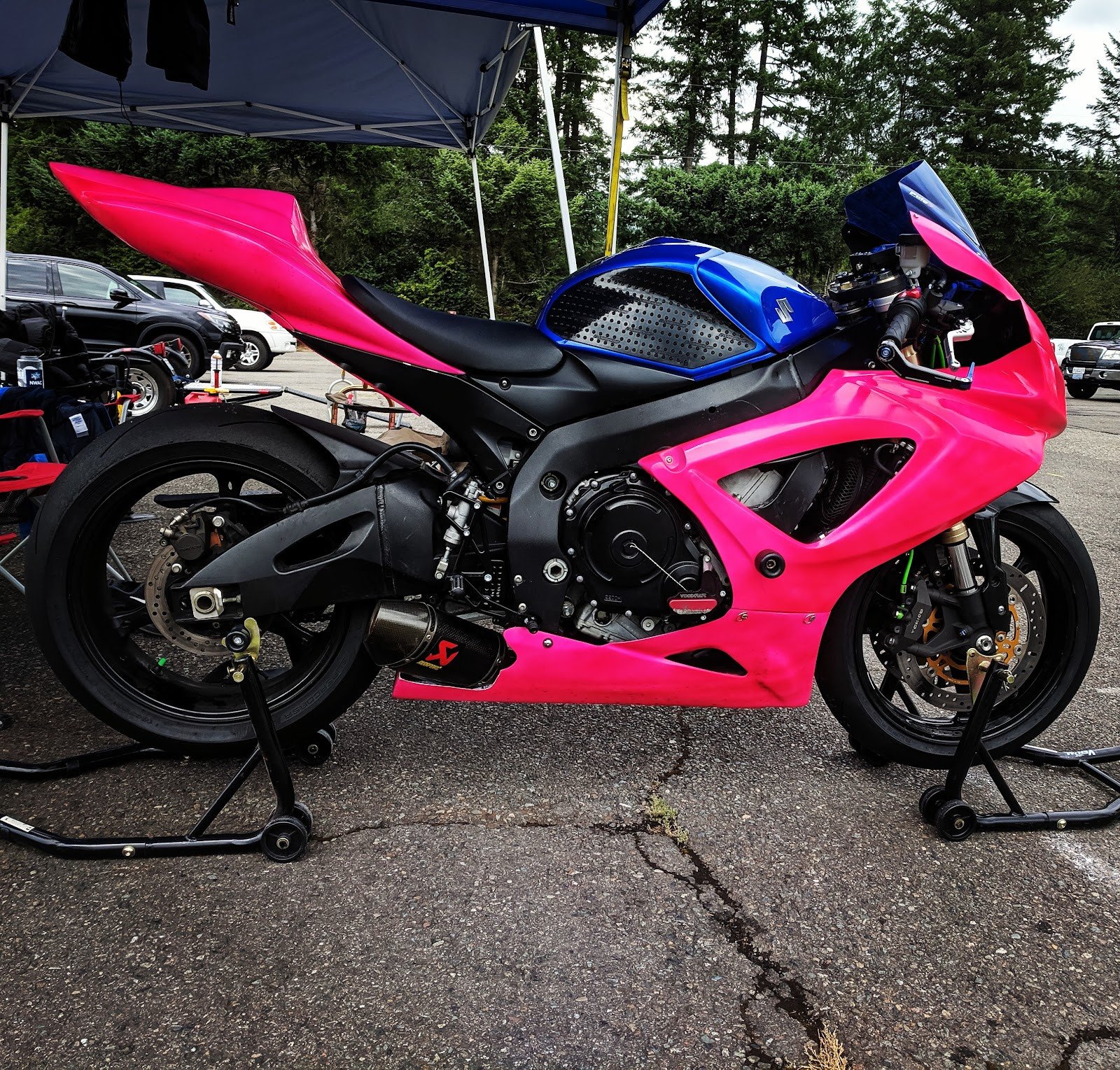 Paint at the start of the season
Paint at the start of the season
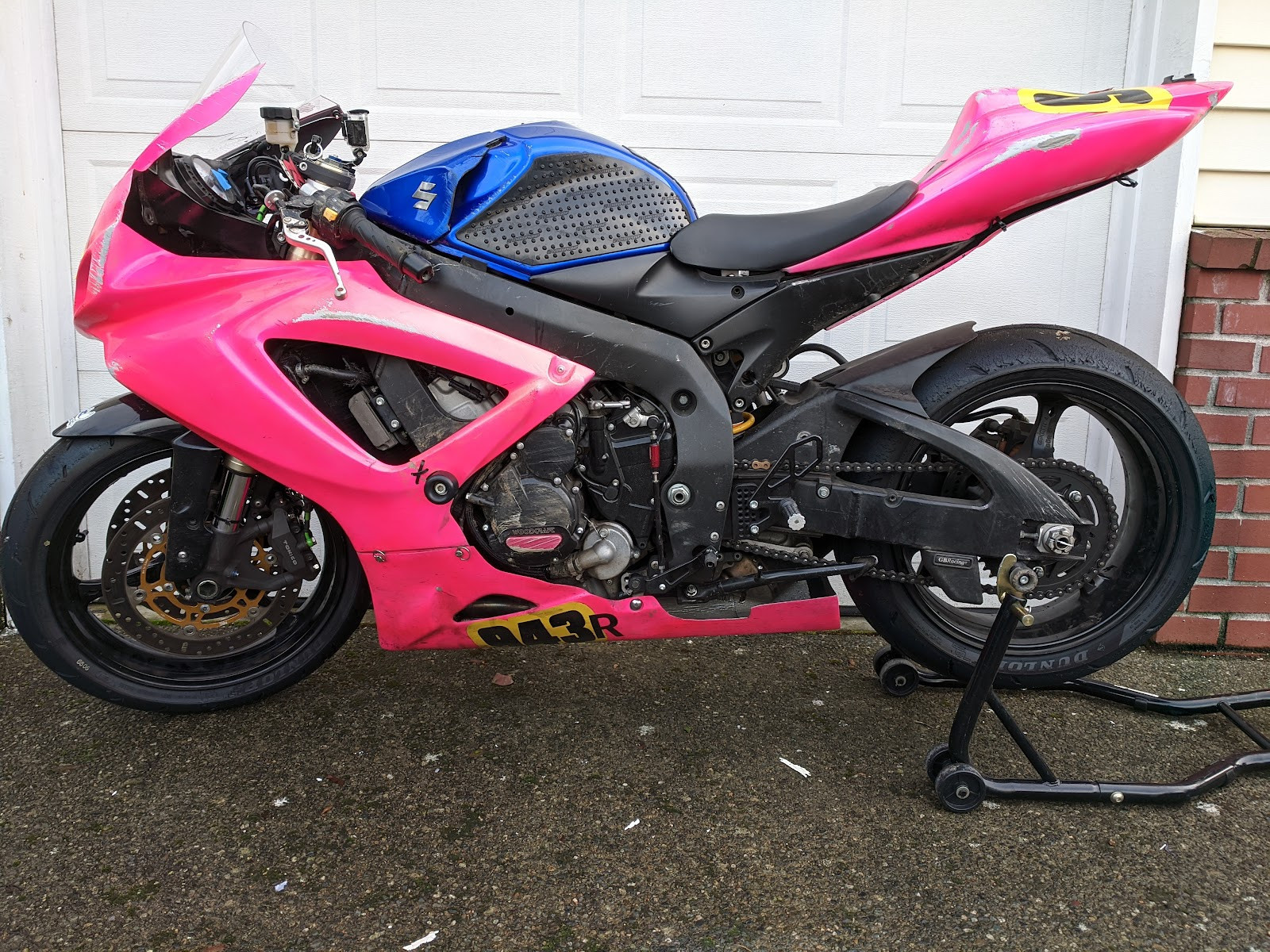 Paint at the end of the season
Paint at the end of the season
3.16. Is It Possible to Borrow Paint Equipment?
Borrowing paint equipment can reduce costs. How can you find equipment to borrow?
Ask other racers if they have paint equipment you can borrow, and consider splitting the costs of renting a paint booth to make the process more affordable.
3.17. Should You Paint Fairings Before Track Time?
Painting fairings before track time ensures better adhesion. Why is this timing important?
Paint fairings before putting any track time on them to ensure proper adhesion. Primer is porous and difficult to re-prep after use.
3.18. What Are the Benefits of Using Vinyl Wrap?
Vinyl wrap is an alternative to paint. What advantages does it offer?
Vinyl wrap is easier to fix after crashes and can be a more practical option than paint. It provides a cost-effective and easily repairable aesthetic solution.
3.19. What Are the Requirements for Race Numbers?
Race numbers are mandatory for identification. What are the requirements for their placement and design?
Check your rule book for specific requirements regarding color, size, and placement of race numbers. Typically, numbers are required on the front, sides, and tail of the bike.
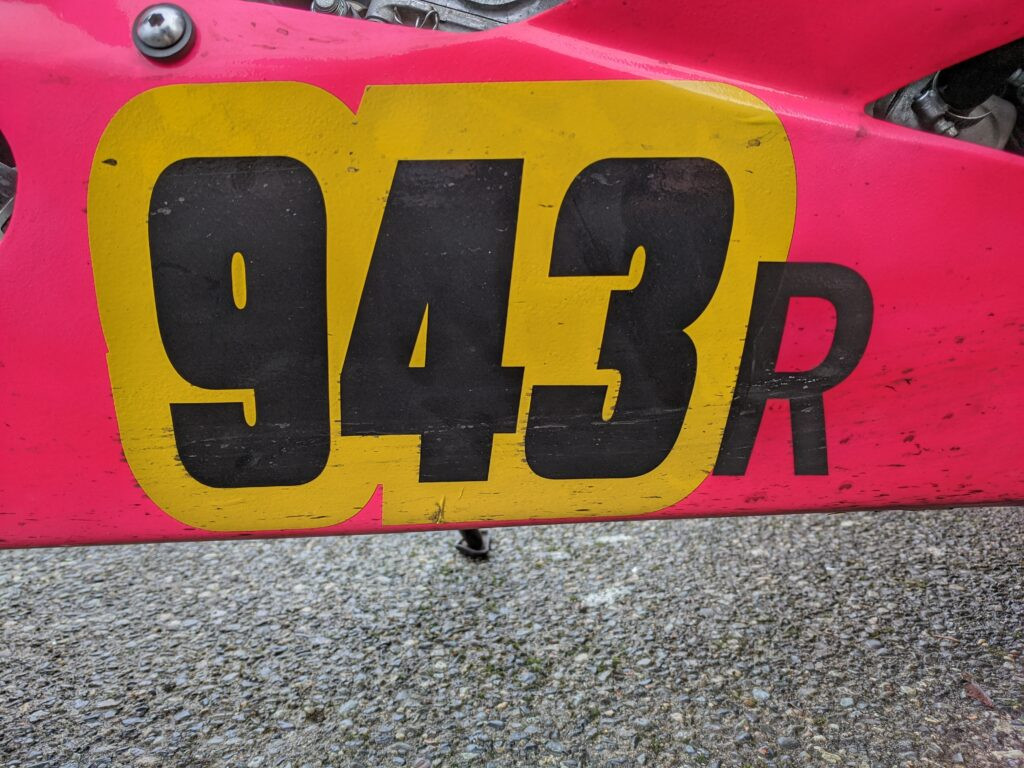 First attempt at applying race numbers
First attempt at applying race numbers
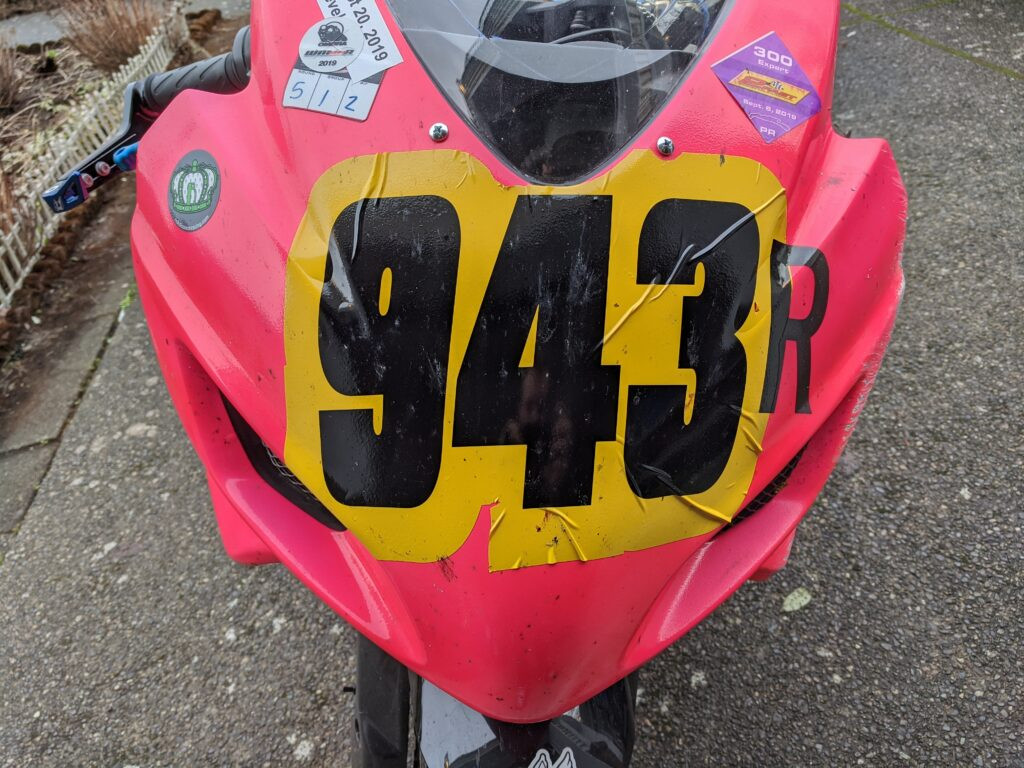 Creases and bubbles in race number application
Creases and bubbles in race number application
4. Key FAQs About Building a Track Bike
4.1. What is the first step in building a track bike?
The first step is selecting the right bike type and size based on your skill level and local racing organization’s regulations. This ensures you can participate in appropriate classes and have a competitive platform.
4.2. How does a race bike differ from a street bike?
A race bike differs primarily in its modifications for safety and performance, including specialized tires, upgraded braking systems, enhanced suspension, and the removal of street-legal components like lights and mirrors.
4.3. Is it recommended to convert a race bike back into a street bike?
No, it is generally not recommended due to the track-specific modifications that make it unsuitable and potentially unsafe for street use. The cost and effort to revert these changes are often prohibitive.
4.4. What bike sizes are best for novice racers?
250cc, 300cc/400cc, 600cc, or 1000cc bikes are generally suitable, with smaller bikes offering a gentler learning curve and larger bikes providing more power and handling challenges.
4.5. Where can you find good deals on race bikes?
Good deals can be found on race forums, Craigslist, and Facebook Marketplace, as well as through local racing organizations and communities.
4.6. What should you look for when buying a used race bike?
Check for high mileage on the original motor, ensure the VIN is intact, and verify maintenance records. A bill of sale is usually sufficient, but be cautious of bikes without a title.
4.7. Is it cheaper to buy a prepped race bike or convert a street bike?
Buying a prepped race bike is often more economical due to the high cost of necessary modifications for converting a street bike.
4.8. What are the key areas to focus on when prepping a bike for racing?
The key areas include maintenance, safety wiring, crash protection, and race bodywork. Compliance with racing organization regulations is essential.
4.9. Why is safety wire used on race bikes?
Safety wire prevents bolts from loosening due to vibration, acting as a secondary securing mechanism to ensure critical components remain secure.
4.10. What paint options are suitable for race fairings?
Both professional paint jobs and DIY rattle-can applications are suitable, with durability being a key consideration, as the paint will likely be damaged during racing. Vinyl wrap is also a viable and easily repairable alternative.
5. Conclusion: Embracing the Racing Community with Usabikers.net
Building a track bike is an exciting and rewarding endeavor, combining mechanical skills with a passion for speed and competition. Usabikers.net is your go-to resource for navigating this journey, offering detailed guides, expert advice, and a vibrant community to support your racing dreams. Whether you’re a novice or an experienced racer, usabikers.net provides the tools and connections you need to succeed.
Ready to dive deeper into the world of track bikes and racing? Visit usabikers.net today to explore more articles, join our forums, and connect with fellow motorcycle enthusiasts. Discover the latest tips, reviews, and community events that will elevate your racing experience. Connect with us and start your racing journey now!
(Address: 801 Sturgis Main St, Sturgis, SD 57785, United States. Phone: +1 (605) 347-2000. Website: usabikers.net.)
